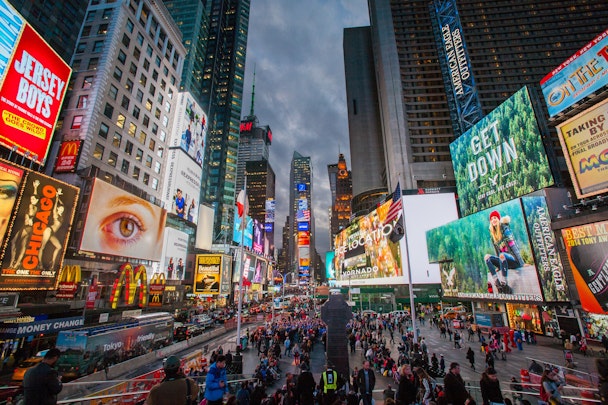The bland building trap: how to avoid ‘optimizing to death’
Among the infinite variety offered by the internet, many have noticed a certain homogeneity in the ways brands present themselves: the same colors, the same fonts, the same promises. Richard Carroll, managing consultant at Frog (part of Capgemini Invent), gives five rules to help you avoid falling into the trap of what he calls ‘bland building.’

Brand building means standing out – and avoiding the easy, ‘bland’ route / Image via Frog
Technology has enabled brands to reach customers through highly personalized messaging, delivered through advanced advertising techniques. But this evolution, combined with pandemic-driven digital acceleration and direct-to-consumer (D2C) marketing, has created a new beast: the ‘bland.’
What is a ‘bland’? They are predominantly D2C/digital-first businesses that don’t believe in brand building, instead putting their faith in product benefits, organic growth and performance marketing. They’re prevalent in social commerce in the form of buy-now-pay-later providers, fashion subscription boxes, supplements and ‘insert-whatever-I-last-searched.’
They all feature galleries of clean, chic imagery, showcasing 20 or 30-somethings finding joy in the product. All will proudly display their ethical credentials or make lofty promises around their purpose. All are stylized by a sans-serif font logo. Strangely, it’s difficult to specifically recall any of them.
It’s not just startups. Established businesses are increasingly leaning on these techniques to drive optimization and ROI. The techniques aren’t wrong, but when overused, or used in isolation, they decrease overall advertising effectiveness and ultimately will lead businesses to ruin. These businesses are optimizing themselves to death. To be successful, these techniques must be accompanied by long-term, distinctive brand building.
Be distinct, not different
To avoid becoming a bland you need to be distinct and avoid the same mistakes many of those businesses in your social feed are making today. Whether you’re creating advertising or designing experiences, everything your brand does should have its own style and be recognizable as yours.
Achieve that by following these five core principles.
1. Develop a distinct brand narrative
Brands should articulate why a business, product or service exists and why people should buy it. Conveying these reasons through effective storytelling builds an emotional connection. To set your brand apart, reinventing the narrative around your business can fundamentally change how it’s perceived. Nowhere is this more successful than at Red Bull. There are plenty of energy drinks out there, but Red Bull has changed the narrative to be about high performance, focus and accomplishment (not an expensive, funny-tasting drink that comes in a tiny can).
2. Use what you already have
To stand out from the crowd, you don’t need to change your value proposition or completely overhaul your product offering. Look at your history to understand what is unique – your founders, location, heritage, identity and existing customer perceptions. The AA did this brilliantly in 2018, refocusing on brand building in a campaign that used its long-established identity to deliver commercial results. Don’t ignore your history – study it and use it.
3. Being distinct starts in the foundations
Build foundational principles that consistently communicate your brand distinctively. Enshrine them, value them and, most importantly, protect them (policing if you must). Discipline around your foundations is one of the greatest strengths any brand can have. That means making business decisions that uphold what your brand stands for, and not focusing on a quick dollar.
4. Human-centered design
How are your brands, products and experiences used and enjoyed – and what are the wider consequences? Design has often focused on usability and making experiences frictionless, but this can have unexpected ramifications. Facebook set out to connect us but now divides us through misinformation; Airbnb set out to disrupt the hotel market but increased rent prices for locals. This presents a challenge to create sustainable brands, products and experiences for society.
5. Simplify brand operations
Large or decentralized organizations can struggle to tell a consistent brand narrative. What starts as distinct becomes inconsistent and ineffective the further it gets from the brand team. By simplifying the brand system, organization and processes (supported with technology and data), it becomes easier to communicate the brand at scale.
Form follows emotion
Frog’s founder, Hartmut Esslinger, established our credo: “Form follows emotion.” Simply put, brand and design must connect to people’s emotions to serve their real needs and not be purely product- or utility-focused.
This guided our recent work with Lego, where we built a distinctive online design system that brings the physical joy of play to Lego.com, making the digital experience work harder as a brand-building asset.
What can we learn from this? In crowded categories where every business is ‘user-focused,’ the result can be bland, functional and interchangeable experiences. In these situations, it’s even more important to create a distinct brand and stand out.
Content by The Drum Network member:

frog
frog is a leading global creative consultancy, part of Capgemini Invent. Partnering with passionate leaders and visionary entrepreneurs, we apply creativity, strategy,...
Find out more
